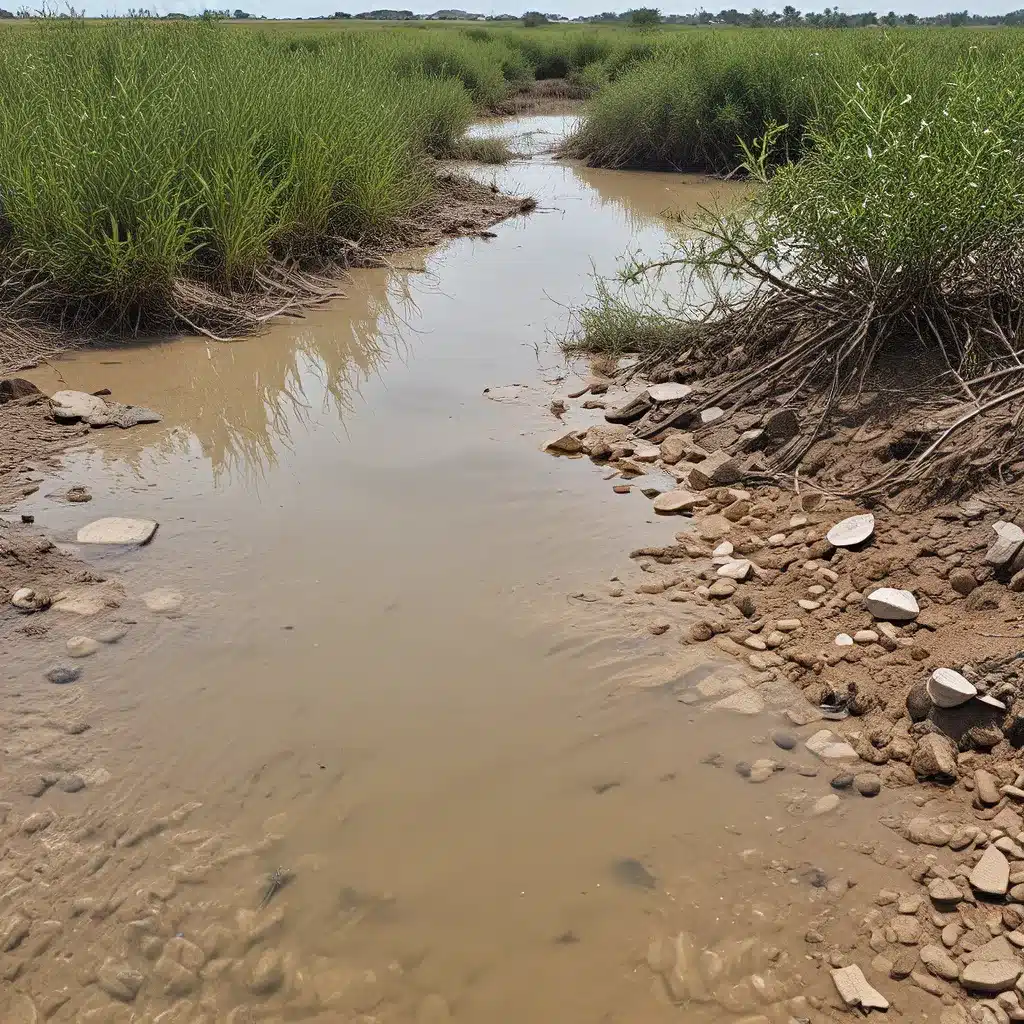
Bracing for the Stormy Seas Ahead: Navigating the Uncharted Waters of Climate Change
As I gaze out the window of my cozy home office, I can’t help but feel a sense of unease. The skies are growing darker, the winds are picking up, and the distant rumble of thunder echoes across the horizon. It’s a stark reminder that the climate challenges we’ve been hearing about for years are no longer just distant threats – they’re knocking on our doorstep, demanding our attention.
But you know what they say – when life gives you lemons, you make lemonade. And when Mother Nature throws a curveball, we have to be ready to step up to the plate. That’s why I’m here today to talk about the critical importance of emergency water management strategies in the face of climate change.
Confronting the New Normal: Extreme Weather and Unpredictable Water Supplies
Let’s start with the big picture. According to a report from the California Natural Resources Agency, climate change is already causing more frequent and severe droughts, floods, and wildfires across the globe. And as these extreme weather events become the new normal, the impact on our water supplies is only going to become more severe.
Think about it – a single major storm can overwhelm outdated water treatment facilities, leading to contaminated drinking water and potential health crises. And prolonged droughts can deplete reservoirs and groundwater sources, leaving communities high and dry. It’s a recipe for disaster, and we need to be prepared.
Navigating the Uncharted Waters: Innovative Water Management Strategies
So, what can we do? Well, the good news is that there are a number of innovative water management strategies that can help us weather the storm. Let’s take a look at a few of them:
Diversifying Water Sources
One of the key strategies is to diversify our water sources. According to the Minnesota Pollution Control Agency, this can involve things like:
- Developing groundwater sources
- Investing in desalination and water recycling technologies
- Exploring alternative water sources like stormwater and wastewater
By having a diverse portfolio of water sources, we can ensure that we’re not overly reliant on any one source that might be vulnerable to climate-related disruptions.
Improving Infrastructure
Another critical component is improving our water infrastructure. This can include:
- Upgrading and modernizing water treatment facilities
- Enhancing water storage and distribution systems
- Implementing smart water management technologies
As the FEMA Climate Adaptation Planning Guide points out, investing in resilient infrastructure can help us better withstand the impacts of extreme weather events and ensure that our water supplies remain safe and reliable.
Fostering Collaboration and Coordination
But it’s not just about the physical infrastructure – we also need to focus on the human infrastructure. This means fostering collaboration and coordination between different stakeholders, such as:
- Local and regional water authorities
- Emergency management agencies
- Community organizations and the public
By working together, we can develop more comprehensive and effective emergency water management plans that address the unique needs and challenges of our communities.
Embracing the Challenge: The Role of Water Professionals in Safeguarding our Future
And that’s where you, as water professionals, come in. Your expertise and dedication are crucial in helping us navigate these uncharted waters.
Whether you’re a water treatment engineer, a policy analyst, or a community outreach coordinator, you have a vital role to play in shaping the future of water management. It’s up to you to stay informed about the latest climate science, to explore innovative technologies and strategies, and to collaborate with your colleagues to develop robust emergency plans.
Sure, it’s a tall order, but I have no doubt that you’re up for the challenge. After all, you’ve been dealing with complex water management issues for years, and you’ve proven your ability to adapt and innovate time and time again.
Weathering the Storm Together: A Call to Action
So, my friends, let’s roll up our sleeves and get to work. The storms are coming, and we need to be ready. But I have a feeling that with your expertise, your dedication, and your can-do attitude, we can weather this challenge and come out stronger on the other side.
Together, we can build a future where our water supplies are resilient, our communities are prepared, and our planet is a little bit healthier. It won’t be easy, but I know that with your help, we can make it happen.
Inland Waters Inc. is already leading the charge in this effort, and I encourage you to check out their website to learn more about the innovative solutions they’re developing. But we can’t do it alone – we need all hands on deck.
So, what do you say? Are you ready to dive in and help us navigate these uncharted waters? I’m counting on you, and I know that with your help, we can create a brighter, more water-secure future for us all.


